
Dark times left scars on the city landscape and soul, but also landmarks offering solace. My location guide takes you through the remnants of World War II Vienna and the memorials to the victims of the Holocaust and other Nazi atrocities.
- Features historical locations, memorials & monuments
- Includes a map
- Join a guided walking tour* around WWII sites & memorials
- See also:
Nazis, war & the Holocaust

(One of the remaining WWII flak towers)
When people talk history in Vienna, they generally focus on the periods prior to the early 1930s, beginning with the Roman settlement, passing through the Habsburg dynasty and ending with the admirable interwar social housing projects.
The period after began ignominiously with the establishment of Austria’s homegrown protofascist state in 1934: the so-called Ständestaat. The infamous 1938 Anschluss, when Vienna and Austria became part of Nazi Germany, soon followed. As did, of course, World War II.
The arrival of the allies in 1945 saw the city liberated / captured from the Nazis and paved the way for a return to the democracy we now enjoy.
World War II left its mark on the Viennese cityscape, especially through aerial bombing and ground fighting between German forces and the Red Army.
Many locations hark back to those days of conflict, as do numerous memorials honouring the victims of the tyrannical and murderous Nazi regime.
Scars of war & oppression
Let us begin with notable (sometimes for the wrong reasons) locations left over from those days…
The “Hitler Balcony”

(A balcony of infamy)
On March 13th, 1938, Hitler stood on the terrace of the Neue Burg and announced that his home country was now part of Germany. Tens of thousands in the square below greeted the so-called Anschluss with decided enthusiasm.
The terrace is a painful reminder of a notable low point in Austrian history and remains inaccessible to the public. But you can see it from Heldenplatz square.
Flak towers

(A flak tower in the Arenbergpark)
The largest reminders of the dark days of the Nazi period are mammoth flak towers. Three pairs were built toward the end of the war, each consisting of one large gun tower and a smaller control tower.
Dismantling the towers has proved impractical, so they remain squat blemishes on the landscape, sometimes rising behind a row of historical houses like something out of War of the Worlds.
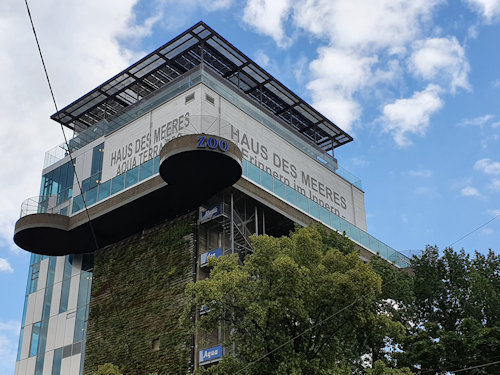
(The Haus des Meeres)
One pair is split between Fritz-Grünbaum-Platz 1 in the sixth district and Stiftgasse 2a in the seventh district.
The smaller tower is now the Haus des Meeres aquarium/zoo and also has the 360° OCEAN SKY rooftop restaurant. Visit the adjoining Retro Gaming Museum to see parts of the underground bunker complex.
The larger tower is incorporated within the off-limits Stiftkaserne army complex, though the top can be seen from afar of course.
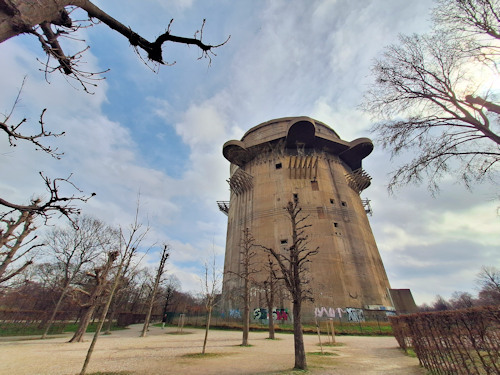
(A flak tower in the Augarten)
Another pair stand unused in Arenbergpark, a recreational urban park in the third district. So trees, benches, playgrounds and sports courts now surround the towers.
The final two towers also sit unsed in the northern and western part of the historical Augarten (park).
Stadttempel
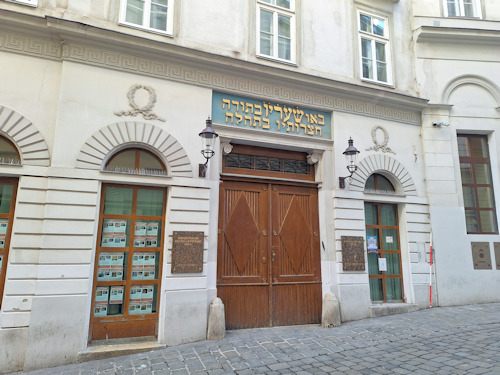
(The Stadttempel)
The synagogue at Seitenstettengasse 4 is approaching its 200th anniversary and serves as the spiritual and cultural centre of Jewish life in today’s Vienna.
Although ransacked and temporarily put to other uses, the Stadttempel avoided complete destruction during the 1938 November pogrom. It was so embedded within the surrounding residential housing that the mob dared not set fire to it.
Every other Jewish building of faith in the city was destroyed.
The IKG website has details of how you can visit.
05 symbol

(The resistance symbol today)
Stand outside the main entrance of Stephansdom cathedral, and just to your right you see a glass sheet covering the letter O and number 5 carved into the wall.
This was the symbol of the largest Austrian resistance movement. The number 5 stands for the letter E. And OE stands for the German word for Austria (Oesterreich), which was not used by the Nazi regime after the Anschluss.
The symbol appeared on the wall in 1945, though was enhanced for permanence in a later year.
Courts and institutions

(Vienna’s Landesgericht für Strafsachen)
Landesgerichtsstraße 11 houses Vienna’s regional criminal court. The building has a long history of life as a court institution that goes back to 1839.
Between 1938 and 1945, the court operated under Nazi jurisdiction. An execution room inside saw over 1200 people guillotined, including many Austrians put to death for resisting the regime. An information display outside the entrance recalls that period.
The execution room itself has been turned into a memorial site, though access is limited to rare guided tours.
The Nazi’s military courts were at Stubenring 1 (now home to various federal ministries). A plaque in German explains how thousands were tried there for “desertion, subversion of the war effort, helping the enemy, and similar.” Many of those individuals subsequently received the death sentence.
Memorials, monuments & museums
Vienna has many installations and locations whose intent is to honour the victims of WWII and, particularly, the victims of Nazi tyranny. These monuments, memorials and museums help us avoid the mistakes of the past and remind us to “never forget”.
Holocaust memorials
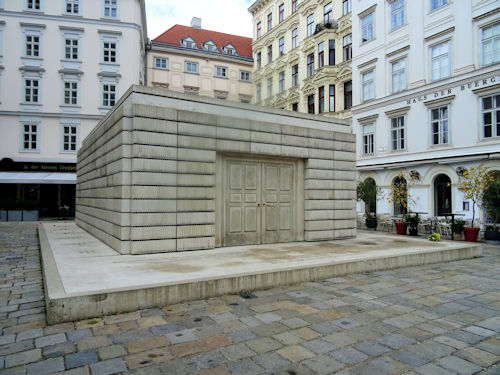
(Whiteread’s inverted library design)
The two largest specific memorials for Jewish victims of the Holocaust are Rachel Whiteread’s installation on Judenplatz and the Wall of Names next to Otto-Wagner-Platz.
- The plinth of Whiteread’s inverted library carries memorial dedications and the names of the concentration camps where tens of thousands of Austrian Jews were murdered. The host square is a historically Jewish part of central Vienna and home to a location of the Jewish Museum.
- The Wall of Names, unveiled in 2021, is a 200m loop of wall inscribed with the names of every one of the 65,000+ Jewish victims of the Nazis (or their supporters) in Austria. A small memorial off to one side also honours the victims who were not Jews.
Stones of Remembrance
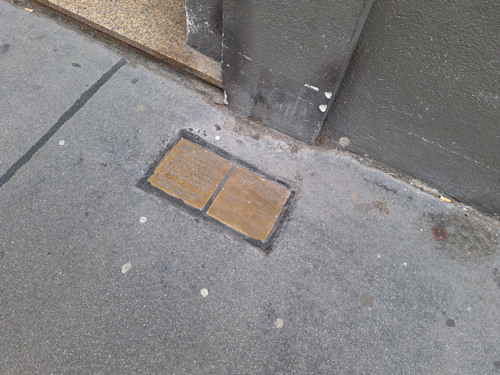
(“Steine der Erinnerung”)
All over Vienna, you find small memorial plaques embedded into the pavement outside buildings.
These brass “stones of remembrance” carry the names of former (Jewish) inhabitants of that address who were deported and murdered in concentration camps.
This website explains the project and gives you access to a map and database of stones.
Herminengasse
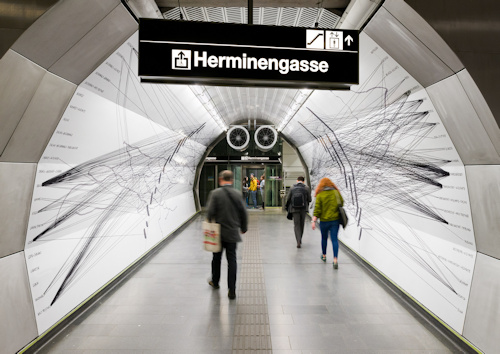
(The underground memorial; press photo courtesy of and © Iris Ranzinger / KÖR GmbH)
One street with an unusually large number of stones of remembrance is Herminengasse in Vienna’s second district.
A 2017 wall memorial by Michaela Melián in the neighbouring Schottenring subway station honours the 800 Jews deported from accommodation on Herminengasse (the authorities also used the location to temporarily house deportees).
Aspang railway station memorial

(An incredibly impactful design)
A 2017 memorial designed by PRINZpod in Leon-Zelman-Park seems to feature railway tracks disappearing into darkness and oblivion. And that’s no coincidence.
The location was once the Aspang railway station, and the memorial honours the thousands of Jews deported from that station to imprisonment and death in concentration camps.
Inscriptions on the concrete rails remind us that of the 47,035 that left the station between 1939 and 1942, only 1073 survived the camps.
Morzinplatz memorial
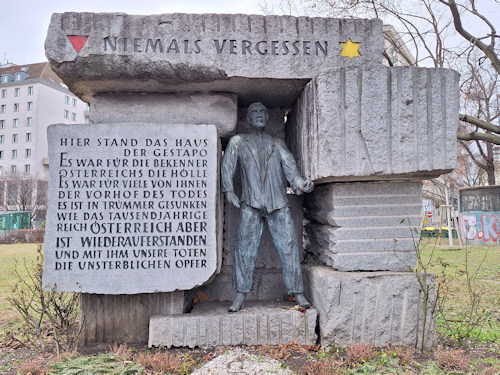
(“Never forget”)
A converted hotel off Morzinplatz in the town centre housed the Gestapo main offices from 1938. Here they administered their regime of oppression, tortured prisoners and sent many of the latter to the concentration camps.
The building did not survive WWII, but a memorial on the square honours the Gestapo’s victims, many of whom were not Jewish but political opponents, homosexuals and others rejected by Nazi ideology.
Memorial to Victims of Nazi Military Justice
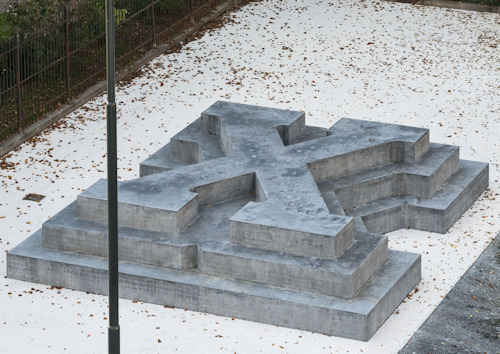
(The memorial lies off to one side of Heldenplatz; press photo courtesy of and © Iris Ranzinger / KÖR GmbH)
Earlier I mentioned the Nazi military courts. A 2014 memorial designed by Olaf Nicolai at one end of Heldenplatz (not far from “Hitler’s balcony”) honours those who fell victim to the “justice” meted out by those courts.
Known as the Deserter’s Monument, the memorial contributes to a renewed respect for (and rehabilitation) of those who resisted serving the cause of the Nazis.
Rehabilitation, because not all of post-WWII Austria understood their role or complicity in the events around war and the Holocaust: many saw military service as an honourable obligation, whatever the circumstances.
Monument against War and Fascism
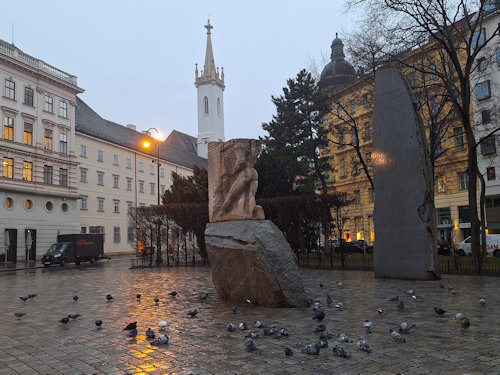
(An early morning view of part of the monument)
Erected in 1988 and designed by the sculptor Alfred Hrdlicka, an accompanying plaque notes that the multipiece monument against war and fascism is dedicated to all who have suffered from these twin disasters.
Nevertheless, the time around WWII features explicitly. For example:
- The location was once the Philipphof building. Several hundred died there in March 1945 when aerial bombing destroyed the house but also the underground area used as an air raid shelter
- A large stone features text from the Austrian declaration of independence made on April 27th, 1945
- A bronze statue of an elderly Jew scrubbing the street speaks to the evils of anti-semitism
- The “door of violence” honours those murdered in Nazi concentration camps and prisons, those persecuted by the Nazis (an info display explicitly mentions those persecuted for their resistance efforts, sexuality, nationality, race, religion and disability), and all victims of war
Red Army monument

(The Hochstrahlbrunnen fountain with the Red Army monument behind)
The war effectively ended for Vienna when soviet troops captured the city. A giant memorial at one end of Schwarzenbergplatz commemorates the soldiers who lost their lives liberating / capturing the city from the Nazis. The Red Army built it themselves.
Third Man Museum

(Not just for film lovers)
A trip to the private Third Man Museum unearths an absolute treasure trove of film memorabilia around the iconic movie set entirely (and mostly filmed) in Vienna. In fact, for a decent view of how the city looked at the end of WWII, just watch it.
However, the museum also has a fairly large section taking a purely historical perspective. The displays tackle Vienna of the late 1930s and post-WWII with the help of numerous photos, documents, newspaper reports and similar.
Heeresgeschichtliches Museum
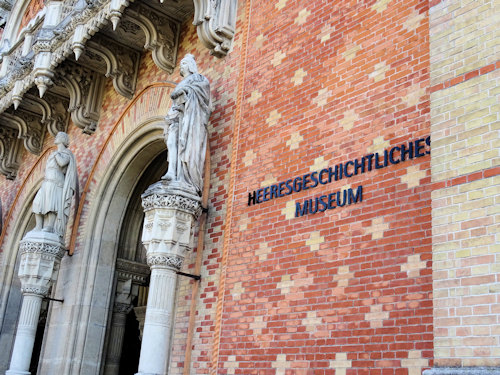
(Vienna’s museum of military history)
The Heeresgeschichtliches Museum deals with Austria’s military history and includes such exhibits as the car in which Franz Ferdinand was sitting in when assasinated in Sarajevo.
The museum also has a large section dealing with WWI and another one dedicated to the interwar period, WWII and the aftermath of WWII. However, at the time of writing, the latter gallery was closed for reevaluation.
(As you can imagine, the era is a sensitive one in Vienna and nobody wants museum treatment to get it wrong.)
Wien Museum & HDGÖ

(The permanent exhibition of the Wien Museum on Karlsplatz is free to visit)
Two museums present the chronology of Vienna and Austria, and both have sections dedicated to the period of national socialism:
- Reopened in 2023 with an extensive permanent exhibition, the Wien Museum on Karlsplatz traces the history of Vienna from prehistoric times through to the 21st century
(One painting in particular sends a shudder down your spine: Igo Pötsch’s 1940 view of Heldenplatz square and The Führer Travelling to the Proclamation on March 15th, 1938)
- As the name suggests, the House of Austrian History presents the history of Austria, albeit beginning with the end of WWI